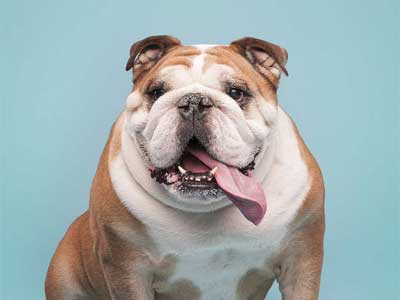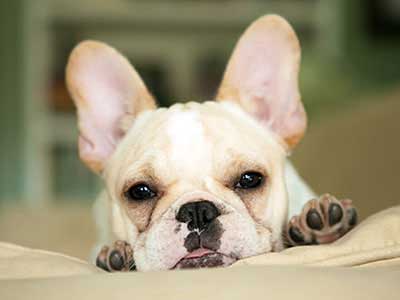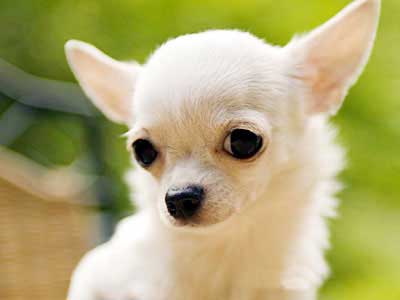Pug
Breed Information |
|
|---|---|
| Popularity |
2022: #35 2021: #33 2020: #29 2019: #31 2018: #28 2017: #31 2016: #32 2015: #33 |
| Name | Pug |
| Other names | Chinese Pug, Dutch Bulldog, Dutch Mastiff, Mini Mastiff, Mops, Carlin |
| Origin |  China China |
| Breed Group |
Toy (AKC:1885) Companion breeds (UKC) |
| Size | Smallest |
| Type | Purebred |
| Life span | 12-15 years |
| Temperament |
Affectionate Cheerful Courageous Gentle Intelligent Friendly Out-going Playful Loyal |
| Height |
Male: 12-14 inches (30-36 cm) Female: 10-12 inches (25-30 cm) |
| Weight |
Male: 13-20 pounds (6-9 kg) Female: 13-18 pounds (6-8 kg) |
| Colors | Black
Fawn |
| Litter Size | 2-4 puppies |
| Puppy Prices |
Average $800 - $1500 USD Usually, the average price of a Pug puppy from a reputable breeder is between $800 and $1,500, while a top-quality Pug puppy can cost as high as $3,000 and upward. Their price depends upon the pup’s age, sex, quality, pedigree, and breeder’s location. |
Breed Characteristics |
|
|---|---|
| Adaptability |
5 stars |
| Apartment Friendly |
5 stars The Pug is good for apartment life. It is relatively inactive indoors and will do okay without a yard. Cannot withstand hot or cold weather and should be kept indoors at a comfortable temperature. |
| Barking Tendencies |
3 stars Occassional |
| Cat Friendly |
5 stars |
| Child Friendly |
4 stars Good with Kids: This is a suitable breed for kids and is known to be playful, energetic, and affectionate around them. |
| Dog Friendly |
5 stars |
| Exercise Needs |
2 stars Pugs are strong dogs with short, straight legs. They need to be taken on daily walks. They enjoy energetic games and will keep in better health if given regular exercise. But be careful not to overdo it, especially if you see them start to wheeze. |
| Grooming |
1 stars Low Maintenance: Grooming a Pug’s coat is easy. Brush his smooth double coat weekly with a rubber curry brush to remove dead hair. And you will remove lots of it, because Pugs shed. Bathe the Pug as needed. With the gentle dog shampoos available now, you can bathe a Pug weekly if you want without harming his coat. |
| Health Issues |
5 stars Hypoallergenic: No |
| Intelligence |
4 stars Ranking: #57 Full Ranking List |
| Playfulness |
3 stars |
| Shedding Level |
4 stars Constant Shedding: Expect this dog to shed frequently. Be prepared to vacuum often. Brushing will reduce shedding as well as make the coat softer and cleaner. |
| Stranger Friendly |
5 stars |
| Trainability |
3 stars Moderately Easy Training: It is necessary to be gentle when training the Pug, as it is very sensitive to the tone of is master’s voice. Pugs are sometimes stubborn but do well with obedience training. |
| Watchdog Ability |
3 stars |
Pug Names |
||
|---|---|---|
| Rank | Boy Names | Girl Names |
| 01 | Charlie | Daisy |
| 02 | Buddy | Millie |
| 03 | Bo | Ella |
| 04 | Brody | Lady |
| 05 | Ace | Penny |
| 06 | Oliver | Piper |
| 07 | Hank | Cookie |
| 08 | Baxter | Shelby |
| 09 | Louie | Sadie |
| 10 | Rocco | Minnie |
| 100 Cute Puppy Names › | ||
Overview |
|---|
|
Square-proportioned, compact and of a cobby build, the pug is a large dog in a little space. Its gait is strong and jaunty, but with a slight roll of the hindquarters. Its distinctive expression is soft and solicitous. Its forehead has large, deep wrinkles. Its coat is fine, smooth and short. The Pug breed is often described by the Latin phrase multum in parvo, or "much in little" or "a lot of dog in a small space", alluding to the Pug's remarkable and charming personality, despite its small size. Pugs are strong willed but rarely aggressive, and are suitable for families with children. The majority of the breed is very fond of children and sturdy enough to properly play with them. Depending on their owner's mood, they can be quiet and docile but also vivacious and teasing. Pugs tend to be intuitive and sensitive to the moods of their owners and are usually eager to please them. Pugs tend to have a somewhat lazy nature and spend a lot of time napping. They are often called "shadows" because they follow their owners around and like to stay close to the action, craving attention and affection from their owners. |
History |
|
There are various theories regarding the origin of the Pug breed, but the most generally accepted is that they originated in the Orient, and are a smooth-coated, longer-legged type of Pekingese. They have been well known in Europe since at least the 16th Century. After gaining favor with Royalty, the breed became very popular and even more well known. The AKC recognized the Pug in 1885. |
References
- [1] ^ YouTube: Everything You Need to Know About Pugs - Characteristics and Care
- [2] ^ YouTube: What you need to know about Pugs?





